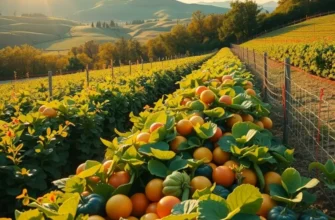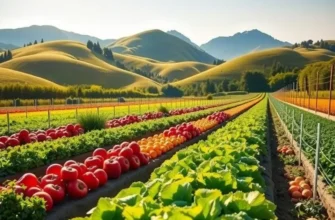Amid growing environmental concerns, the choices we make at the grocery store can significantly impact our planet. By selecting climate-positive produce, we can support sustainable agriculture, reduce our carbon footprint, and nourish ourselves. This guide aims to help environmentally-conscious individuals navigate the world of eco-friendly food options, fostering a deeper connection between our health and the health of the Earth.
Understanding Climate-Positive Produce

Climate-positive produce is a revolutionary approach in agriculture, where the cultivation and harvesting of crops result in a net benefit to the environment. Instead of merely sustaining current conditions, these practices actively enhance ecosystem health. This not only helps mitigate climate change but also strengthens biodiversity and improves soil health.
But what makes produce climate-positive? It goes beyond the absence of synthetic chemicals; it involves methods that restore the ecological balance. Think of it as using nature to heal nature. Practices such as crop rotation, cover cropping, and agroforestry contribute to carbon sequestration and enrich nutrient cycles. These techniques reduce greenhouse gas emissions by capturing more carbon from the atmosphere than the farm emits.
So how can you, the conscious consumer, identify climate-positive produce? Start by looking at certifications. Organic labels ensure the absence of harmful pesticides, but also seek out certifications in regenerative agriculture. Though less common, they signify farms committed to enriching rather than depleting resources.
Furthermore, consider supporting local farms known for their sustainable practices. The ‘local’ aspect reduces the carbon footprint associated with transportation. Visit farmers’ markets and engage in conversations with growers about their farming methods. This engagement empowers small farmers and encourages them to continue their environmental stewardship.
When shopping, focus on seasonal produce, which tends to align with natural patterns and reduce resource usage. Off-season produce often requires intensive energy inputs to cultivate, making them less climate-friendly.
Another practical tip is to diversify your diet with diverse plant species, thus promoting biodiversity. By eating a variety of plants, you contribute to demand for lesser-known crops, which often have lower environmental burdens. This way, eating more than the conventional staples like wheat, rice, and corn, supports biodiversity both above and below ground.
To further explore sustainable eating, you might find insights in articles focusing on ingredient guides and substitutions, like this guide on flavor boosters without salt. Such resources can aid in making more informed choices that align with eco-friendly principles.
Ultimately, understanding and choosing climate-positive produce is a journey of empowerment. By favoring foods that replenish the earth, you’re not just feeding your body—you’re fueling a movement that nourishes the planet. Let’s create a cycle of growth where our choices today regenerate the land for tomorrow.
Final words
Embracing climate-positive produce is more than just a personal choice; it’s a commitment to nurturing the planet for future generations. By being aware of your food sources and opting for sustainable options, you’re playing an integral role in the fight against climate change and biodiversity loss. Every meal provides an opportunity to support eco-friendly practices and promote a healthier environment. Together, our collective efforts can drive significant change and foster a world where both people and nature thrive harmoniously. Choose wisely, eat consciously, and inspire others to follow suit.








